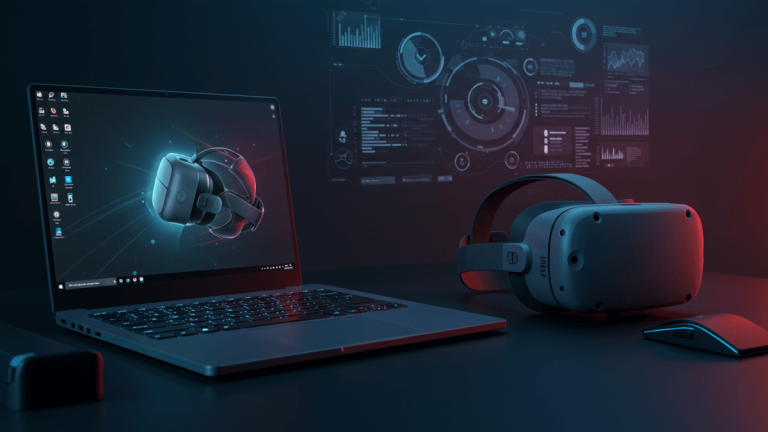With rising global temperatures and longer, hotter summers, staying cool is more important than ever — especially for people working or exercising outdoors. While fans and air conditioning can help indoors, they don’t offer relief when you’re on the move. That’s where the air conditioner vest comes in — a wearable cooling device designed to regulate your body temperature wherever you go.
In this article, we’ll explore what an air conditioner vest is, how it works, and why it’s becoming an essential piece of gear for workers, athletes, and anyone who needs to stay cool in extreme heat.
Understanding the Air Conditioner Vest
An air conditioner vest, also known as a cooling vest or personal air conditioning vest, is a piece of wearable technology designed to reduce body heat and keep you comfortable in hot environments.
These vests work by circulating cool air or liquid around your body or using cooling materials that absorb and dissipate heat. They are lightweight, rechargeable, and designed to be worn over or under regular clothing.
While they may sound futuristic, air conditioner vests are already being used in industries like construction, agriculture, sports, and even healthcare to help prevent heat stress and improve performance.
Why People Use Air Conditioner Vests
Excessive heat can quickly lead to fatigue, dehydration, and reduced focus. In more severe cases, it can cause heat exhaustion or heatstroke — conditions that can be life-threatening.
Air conditioner vests are designed to help maintain a safe core temperature by actively or passively cooling the body. People use them for:
- Outdoor work: Construction, mining, or delivery jobs in high temperatures.
- Sports and fitness: Running, cycling, hiking, or gym workouts.
- Medical conditions: For people with multiple sclerosis (MS) or other heat-sensitive conditions.
- Military and emergency response: For personnel operating in harsh environments.
- Everyday comfort: During summer commutes or outdoor activities.
Essentially, an air conditioner vest is a portable cooling system that lets you stay active, safe, and productive even in the hottest conditions.
How Air Conditioner Vests Work
While the idea of wearable air conditioning sounds high-tech, the science behind it is surprisingly practical. There are two main types of air conditioner vests: active cooling and passive cooling.
Each uses a different mechanism to control body temperature, but the goal is the same — to pull heat away from the body and maintain a comfortable temperature.
Active Cooling Vests
Active cooling vests use powered systems to lower body temperature. They rely on fans, compressors, or circulating fluids that move cool air or water throughout the vest.
Here’s how they work:
Fan-Based Vests
These are among the most common and affordable types. They use small, battery-powered fans (usually 2 to 4) integrated into the vest. The fans draw in outside air, circulate it inside the vest, and evaporate sweat from the skin — creating a natural cooling effect.
Fan vests are lightweight and ideal for outdoor workers, athletes, or anyone needing quick relief from heat.
Liquid-Circulating Vests
These high-end models use a network of thin tubes filled with cold water or a cooling fluid. A small, rechargeable pump moves the chilled liquid throughout the vest, absorbing heat from your body before returning it to a cooling unit or reservoir.
These vests are highly effective but usually more expensive, used in industrial, medical, or military applications where precise temperature control is needed.
Thermoelectric Vests (Peltier Effect)
Some advanced vests use thermoelectric modules that convert electrical energy into cooling power. When powered, one side of the module becomes cold while the other side releases heat. This system provides consistent cooling without air or liquid movement, but it requires more power and tends to be heavier.
Passive Cooling Vests
Passive cooling vests, on the other hand, do not rely on electricity. Instead, they use phase change materials (PCMs) or gel packs that absorb and store heat.
Phase Change Material (PCM) Vests
PCM vests contain special materials that remain cool for extended periods. These materials absorb heat when they change from solid to liquid, keeping the vest at a comfortable temperature — usually between 14°C to 18°C (57°F to 64°F).
Once the PCM packs warm up, they can be recharged in a refrigerator or freezer for reuse.
Ice or Gel Pack Vests
These use replaceable ice or gel packs inserted into pockets within the vest. While they offer immediate cooling, their effect usually lasts only a couple of hours before needing to be re-frozen.
Passive vests are simple, affordable, and ideal for short-term or moderate heat exposure.
Benefits of Air Conditioner Vests
The popularity of air conditioner vests has grown rapidly due to their numerous benefits.
1. Heat Stress Prevention
They help regulate core body temperature, preventing heat-related illnesses and improving safety for workers and athletes.
2. Improved Productivity
By staying cooler and more comfortable, users can stay focused and perform better for longer periods.
3. Portability and Convenience
Lightweight, rechargeable designs make them suitable for both indoor and outdoor environments.
4. Versatility
They can be used in a variety of settings — from industrial worksites to outdoor recreation.
5. Energy Efficiency
Unlike traditional air conditioning, these vests cool the individual directly, consuming far less energy and reducing the need for large cooling systems.
Limitations of Air Conditioner Vests
While highly effective, air conditioner vests do have some limitations.
- Battery Life: Active cooling vests depend on rechargeable batteries that may only last 4–8 hours.
- Cooling Duration: Passive vests provide limited cooling time before requiring recharging or refreezing.
- Cost: Advanced models, especially liquid-circulating vests, can be expensive.
- Weight: Some designs may feel bulky or heavy, especially with added cooling components.
- Maintenance: Fans, pumps, or PCM packs need occasional maintenance or replacement.
Choosing the right vest depends on your needs, environment, and budget.
Choosing the Right Air Conditioner Vest
Selecting the best vest requires balancing comfort, cost, and cooling performance. Consider the following factors:
Purpose: Are you using it for work, sports, or medical reasons?
Duration: How long do you need it to stay cool?
Power Source: Do you prefer a battery-powered or non-electric model?
Temperature Range: Some vests are designed for mild heat, others for extreme conditions.
Fit and Comfort: Adjustable straps, breathable materials, and ergonomic design make a big difference.
For everyday outdoor use, a fan-based vest or PCM vest offers the best balance of comfort and affordability. For industrial or clinical environments, liquid-circulating vests provide more advanced temperature control.
Safety and Maintenance Tips
To get the most out of your air conditioner vest and ensure safety, follow these best practices:
- Charge batteries fully before use.
- Keep vents and fans clear of dust and debris.
- Store PCM or gel packs properly when not in use.
- Avoid direct skin contact with frozen packs to prevent frostbite.
- Clean the vest regularly, especially if used in dusty or sweaty environments.
With proper care, most vests can last several years while maintaining strong performance.
The Future of Wearable Cooling Technology
The demand for wearable cooling solutions is expected to grow as global temperatures rise and outdoor workforces expand.
Innovations in smart textiles, AI-controlled temperature sensors, and lightweight cooling materials are already being integrated into next-generation air conditioner vests. Future versions may automatically adjust cooling intensity based on your body temperature and external conditions, offering personalized thermal comfort on demand.
As technology evolves, air conditioner vests could soon become as common as fitness trackers — essential tools for comfort, performance, and safety in a warming world.
Conclusion
An air conditioner vest is more than just a piece of clothing — it’s a practical innovation designed to combat heat stress and enhance comfort wherever you go. By circulating cool air or using thermal materials to absorb heat, these vests help people work, train, and live safely in hot environments.
Whether you’re a construction worker under the sun, an athlete pushing limits, or someone seeking relief during summer heatwaves, an air conditioner vest offers a convenient and efficient solution.
As wearable cooling technology continues to improve, staying cool and productive in extreme conditions will no longer be a challenge — it will simply be part of what you wear.
FAQs
1. How long does an air conditioner vest stay cool?
Most fan-based vests last 4–8 hours per battery charge, while passive PCM vests can stay cool for 2–4 hours before needing to be recharged or re-frozen.
2. Can I wear an air conditioner vest under other clothes?
Yes, but for best results, wear it over a lightweight shirt to allow airflow and effective cooling.
3. Are air conditioner vests safe?
Yes, they are safe when used properly. Always follow the manufacturer’s instructions, especially regarding battery charging and use of ice or gel packs.
4. Do air conditioner vests work in humid conditions?
They can be less effective in very humid weather because sweat doesn’t evaporate easily. However, liquid-circulating and PCM models still provide noticeable cooling.
5. Can air conditioner vests be used indoors?
Absolutely. They are great for workshops, factories, or even home use when air conditioning isn’t available or sufficient.
Also read: Beer in a Green Bottle: History, Taste, and Light Sensitivity Explained




Leave a Comment